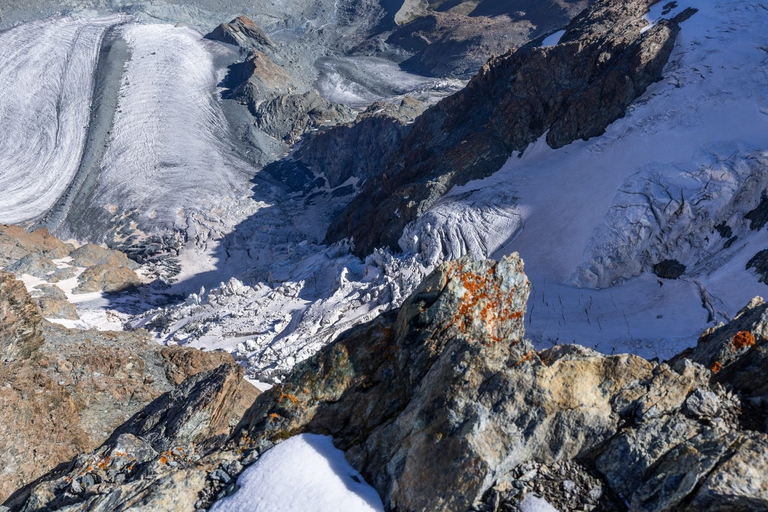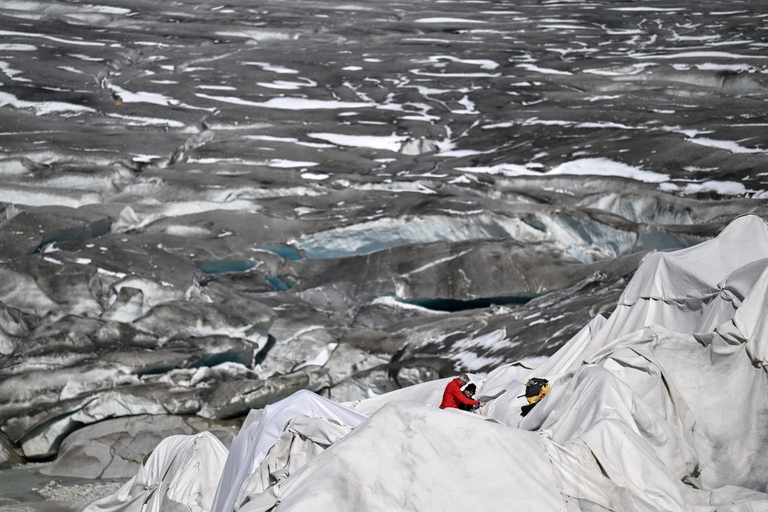https://www.lifegate.it/confine-tra-italia-e-svizzera-fusione-dei-ghiacciai
- |
- Italy and Switzerland have agreed to change their Alpine borders.
- The cause is the melting of the glaciers which modified the ridge where the border between Italy and Switzerland ran.
- Swiss glaciers have lost 10 percent of their volume in just two years.
The border lines between different countries sometimes follow what have always been natural barriers:a river, a mountain, a valley.In Italy we see it clearly with the borders to the north, on the Alpine chain, where two countries can often be admired from a peak.However, there are times when these boundaries are redrawn, as has recently happened between Italy and Switzerland, who have agreed to move the border slightly.The reasons behind this decision, however, are not political as one might think, but climatic.
Melting glaciers force the boundary between to shift Italy and Switzerland
At the foot of Matterhorn, an iconic peak between the two countries and one of the highest in Europe, the glaciers are melting faster and faster due to global warming.This change in the volume of ice on the Plateu Rosa has caused the physical shift of the border line between the two countries, which now find themselves updating it.“In the high mountain regions significant sections of the Italian-Swiss border are defined by the watershed line represented by ridge of glaciers, snowfields or perennial snow”, he wrote the Swiss Federal Council in a note."However, with the melting of the glaciers, these natural elements evolve and redefine the national border when this is determined dynamically”.

For this reason, on 27 September the Swiss Federal Council approved the signing of the convention on the rectification of the borders between Switzerland and Italy.The countries, specifically the Swiss municipality of Zermatt in the Canton of Valais and the Italian region of Valle d'Aosta, had already agreed on the issue in May 2023, expressing their mutual desire to make the change.The final approval from Italy is expected shortly and, once both signatures have been obtained, the agreement will be published and the rectification will be implemented.
Glaciers are retreating faster and faster
THE'Europe is a climate change hotspot, that is, an area that warms faster than average and where the impacts of global warming are felt more heavily.Proof of this is the Alpine glaciers which are receding at alarming rates.THE Swiss glaciers, for example, have seen a dramatic decline over the past two years:they have lost 10 percent of their volume between 2022 and 2023 alone (with 6% and 4% losses respectively), according to i data published by the Swiss academy of sciences.An amount equivalent to that which had previously been lost over a period of thirty years, from 1960 to 1990.

Even on Italian glaciers the effects of global warming are evident, with prolonged periods without precipitation and above all with high temperatures, factors that cancel out the ability of a glacier to produce new ice.A few weeks ago the glacier of Marmolada it was in fact declared “in an irreversible coma”.According to i data released by the Legambiente Glacier Caravan, the Marmolada glacier has retreated 1,200 meters since 1888, losing 70 hectares of surface in the last 5 years, going from 170 in 2019 to 98 in 2023.“At this rate, the Marmolada glacier will no longer exist by 2040,” reads the statement.
The Marmolada itself was the scene of the disastrous collapse of a large portion of the glacier (almost 70 thousand tons of ice, water and debris) in July 2022 in which 11 people lost their lives.A detachment that, according to one study by international researchers coordinated by Aldino Bondesan of the University of Padua, was the result of the effects of climate change, concluding that "the exceptionally high temperatures in the 7 weeks preceding the accident determined a melting rate of 44 millimeters per day".
The Marmolada affair, and also that of the Italian-Swiss Alpine border, are just two examples of what is happening in the Alpine arcs and which underline theurgency to limit the increase in average global temperature, reminding us that these events are and will be increasingly present in our lives, in our environments, in our borders.
